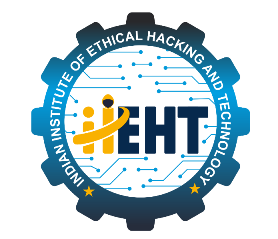Social engineering attack: what is it? What techniques and prevention methods exist.
Date: Dec 23, 2022

Cyber Security Training
Introduction
According to Pound, “Law is social engineering which means a balance between the contending interests in society, in which applied wisdom are used for resolving individual and social problems.” “Social engineering is the practice of prevailing others to give sensitive information. The kinds of information that these culprits are looking for can vary, but when a person is targeted, the culprits generally try to trick you into giving them your bank or private information, or they try to gain access to your computer to covertly install vicious software that will give them access to your bank and password information as well as give them control over your computer”. Social networks have surfaced as a dependable channel for both particular and business communication. However, hackers frequently take advantage of users' confidence in social media platforms for their own gain. Phishing emails are a hoax and a lucrative industry. These attacks have had an impact on multitudinous businesses, governments, and people. Social engineering, which is prevailing a target to discover information to the social engineer, is the most effective way for an attacker to gain access to this knowledge. It is condescending to utmost other hacking ways in that it can rift even the most protected systems because users are the most vulnerable part of the system.
Social engineering tactics for attack
. Below is a list of five most typical types of digital social engineering attacks are
Social engineering techniques
1. Baiting: - There is always something to entice the victim, whether it be a text with a promise of a giveaway or something much more remunerative or scandalous. Baiting is a fundamental component of all types of phishing and other scams as well.
2. Phishing: - It is a type of social engineering attack that uses email, phone, or text to trick a target into clicking on a risky link. The sender of the communication seems to be someone the user is related to and is a credible source. When a person clicks on a fraudulent link, their computer or device becomes infected with malware, frequently compromising data.
3. Email phishing: - The perpetrator of this highly targeted phishing scam chooses certain people or companies as their targets. They then alter their communications based on the characteristics, positions held, and contacts of their victims in an effort to make their attack less noticeable. Spear phishing is much more challenging to execute and may take weeks or even months to finish. If executed skillfully, they are much harder to spot and have higher success rates”.
Social engineering prevention
Social engineers use human emotions like peculiarity and dread to their advantage in order to carry out their plans and entice victims into their traps. Exercise caution, then, if you receive a frightening email, are drawn to a website's promise, or come across renegade digital media. You can defend yourself against the majority of social engineering attempts that occur online by being alert”.
What Sets Ransom Ware Apart from Other Types of Malwares, Social Engineering, Phishing, and Social Engineering?
The term "malware," which is derived from the phrases "vicious" and "software," is used to relate to a wide range of software designed to compromise systems, steal susceptible information, or gain unauthorized access to a network. Malware known as rescue ware uses a variety of ways to encrypt your data, render it inaccessible, or prevent you from accessing a certain system or device. After then, the attackers demand a ransom to restore your access. In contrast, social engineering is a technique that uses human manipulation to extract sensitive information. Social engineering is the practice of connecting with users while posing as a reputable company in order to gain sensitive data like account numbers or passwords. It is a type of social engineering that uses unreliable websites, phones, emails, and texts. In both situations, access to secured accounts and data is gained using the information acquired.
How Do Social Engineering Attacks Appear?
“If a criminal manages to hack or socially engineer one person’s email password they have access to that person’s contact list–and because most people use one password everywhere, they probably have admittance to that person’s social media contacts as well”. Once the felonious obtains access to that email account, they can send emails to all of the victim's connections or post messages on all of the victim's friend's social media pages, possibly even on the pages of the friend's friends.
Approaches to Self-Protection
• Delete any requests for passwords or financial information. If you are nudged to respond to a contact with specific information, it is fraud.
• Reject any offers or requests for assistance.: Real companies and organizations won't approach you to provide services. Consider any pledge to "help" restore credit scores, refinance a home, answer your inquiry, etc., a fraud if you did not directly ask for the sender's aid. In a correspondent vein, eliminate any requests for assistance you get from charities or organizations with which you have no affiliation.
• Turn up the spam filters. “All email clients come with spam filters. Set your settings options to high to find yours, but don't forget to regularly check your spam folder to see if any legitimate email has accidently gotten up there. You may also look for a step-by-step guide on how to set your spam filters by searching for the name of your email provider and the phrase "spam filters."
CONCLUSION
We can draw the conclusion that the law is crucial in resolving conflicts of interest. Individual as well as collective interests coexist. They are both equally important. Although Roscoe Pound introduced the notion of social engineering to American society, everyone now uses it as a method of dispute resolution. India established a societal welfare system using the same idea. ‘Legislators and the judiciary both have a noteworthy impact on the creation of laws that satisfy a variety of human needs”. In our technologically advanced society, human demands are increasing, and new policies and strategies have been established to satisfy these desires.



